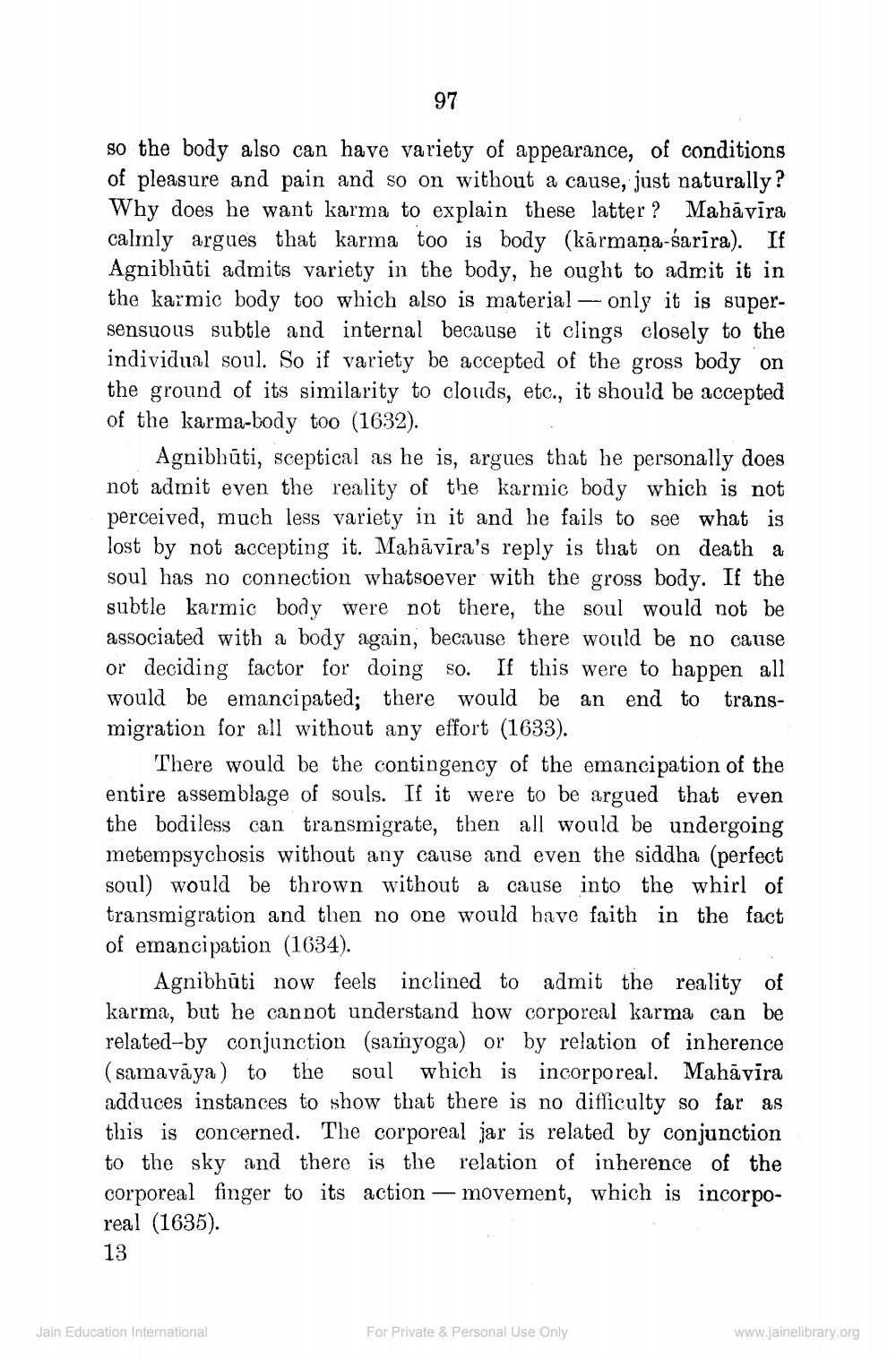________________
97
so the body also can have variety of appearance, of conditions of pleasure and pain and so on without a cause, just naturally? Why does he want karma to explain these latter ? Mahāvīra calmly argues that karma too is body (kārmaņa-śarīra). If Agnibhūti admits variety in the body, he ought to admit it in the karmic body too which also is material - only it is supersensuous subtle and internal because it clings closely to the individual soul. So if variety be accepted of the gross body on the ground of its similarity to clouds, etc., it should be accepted of the karma-body too (1632).
Agnibhūti, sceptical as he is, argues that he personally does not admit even the reality of the karmic body which is not perceived, much less variety in it and he fails to see what is lost by not accepting it. Mahāvīra's reply is that on death a soul has no connection whatsoever with the gross body. If the subtle karmic body were not there, the soul would not be associated with a body again, because there would be no cause or deciding factor for doing so. If this were to happen all would be emancipated; there would be an end to transmigration for all without any effort (1633).
There would be the contingency of the emancipation of the entire assemblage of souls. If it were to be argued that even the bodiless can transmigrate, then all would be undergoing metem psychosis without any cause and even the siddha (perfect
oul) would be thrown without a cause into the whirl of transmigration and then no one would have faith in the fact of emancipation (1634).
Agnibhūti now feels inclined to admit the reality of karma, but he cannot understand how corporeal karma can be related-by conjunction (samyoga) or by relation of inherence (samayāya) to the soul which is incorporeal. Mahā vira adduces instances to show that there is no difficulty so far as this is concerned. The corporeal jar is related by conjunction to the sky and there is the relation of inherence of the corporeal finger to its action — movement, which is incorporeal (1635).
13
Jain Education International
For Private & Personal Use Only
www.jainelibrary.org




